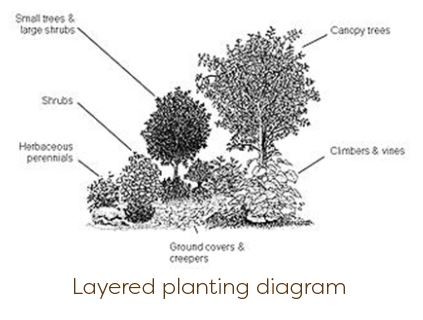
Mulching the conventional landscape has evolved over the years from mere weed suppression and water conservation (mulch’s original purpose), to yearly mulch applications looking to “refresh” planting beds and paint the landscape with differently-colored mulches in an effort to stylize our yards in the same way we decorate our interiors. This new approach to mulch in the landscape comes at a cost. Not only a concrete, dollars and cents cost, but a detrimental cost to our environment as well.
Organic mulch retains soil moisture by reducing competition with weeds, shading the soil, and improving soil structure. This soil moisture can reduce the need for supplemental watering of landscape plants, saving water and labor costs. Colored mulch is NOT adding organic matter to your soils, and is in fact adding chemicals as well as degrading your water supply.

Dyed mulches (black, red, green and other color varieties) are usually made up of recycled wood waste. This trash wood can come from old hardwood pallets, old decking, or worse yet- pressure treated CCA lumber. CCA stands for Chromium, Copper and Arsenic; chemicals used to preserve wood. This ground up trash wood is then sprayed with a tint to cover up inconsistencies in the wood and give it a uniform color. Due to consumer demand, we currently source dyed hardwood mulch as opposed to palletized scrap or trash wood. We are working to encourage our clients to make the switch to undyed mulch.
This dyed wood mulch does not break down to enrich the soil as good mulch should. Instead it leaches the dye along with the possible contaminants (chromium, copper, arsenic and others) into the soil harming, even killing beneficial soil bacteria, insects, earthworms, and sometimes the plants themselves. These wood mulches actually rob the soil of nitrogen by out-competing the plants for the nitrogen they need for their own growth.
The depth of mulch is variable depending on the plants growing there, but generally should not exceed 2 to 3 inches. Mulch should not be piled up around plants so that water runs off instead of penetrating the soil, and should never be placed in direct contact with the stems or trunks of trees and shrubs, as this incorrect practice leads to disease and fungal issues.

An alternative to bark mulch is the addition of living mulch, or ground cover plant materials. Native ground covers and planting layers in the landscape are another way to control weeds and moisture in your beds. This technique of green mulching allows plant material to grow together and alleviate bare areas in planting beds, thus reducing weeds and increasing soil moisture while also adding aesthetic value.


Proper mulching practices maintain optimum plant health, ultimately increasing the life of a plant and reducing maintenance and replacement costs. At Strauser we can help define areas in your landscape that would benefit from mulching and planting renovations to realize the above benefits. Let us come out to your property to show how we can help you utilize these and other Better Way solutions!









